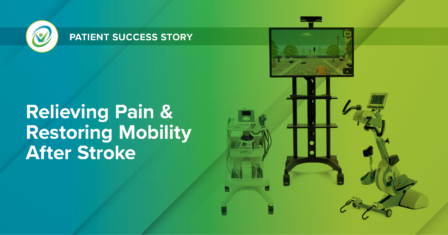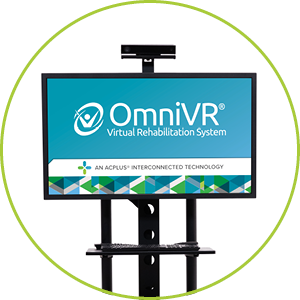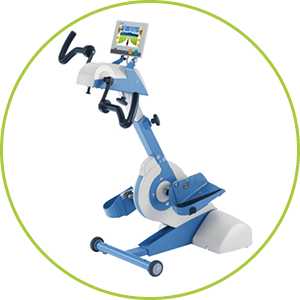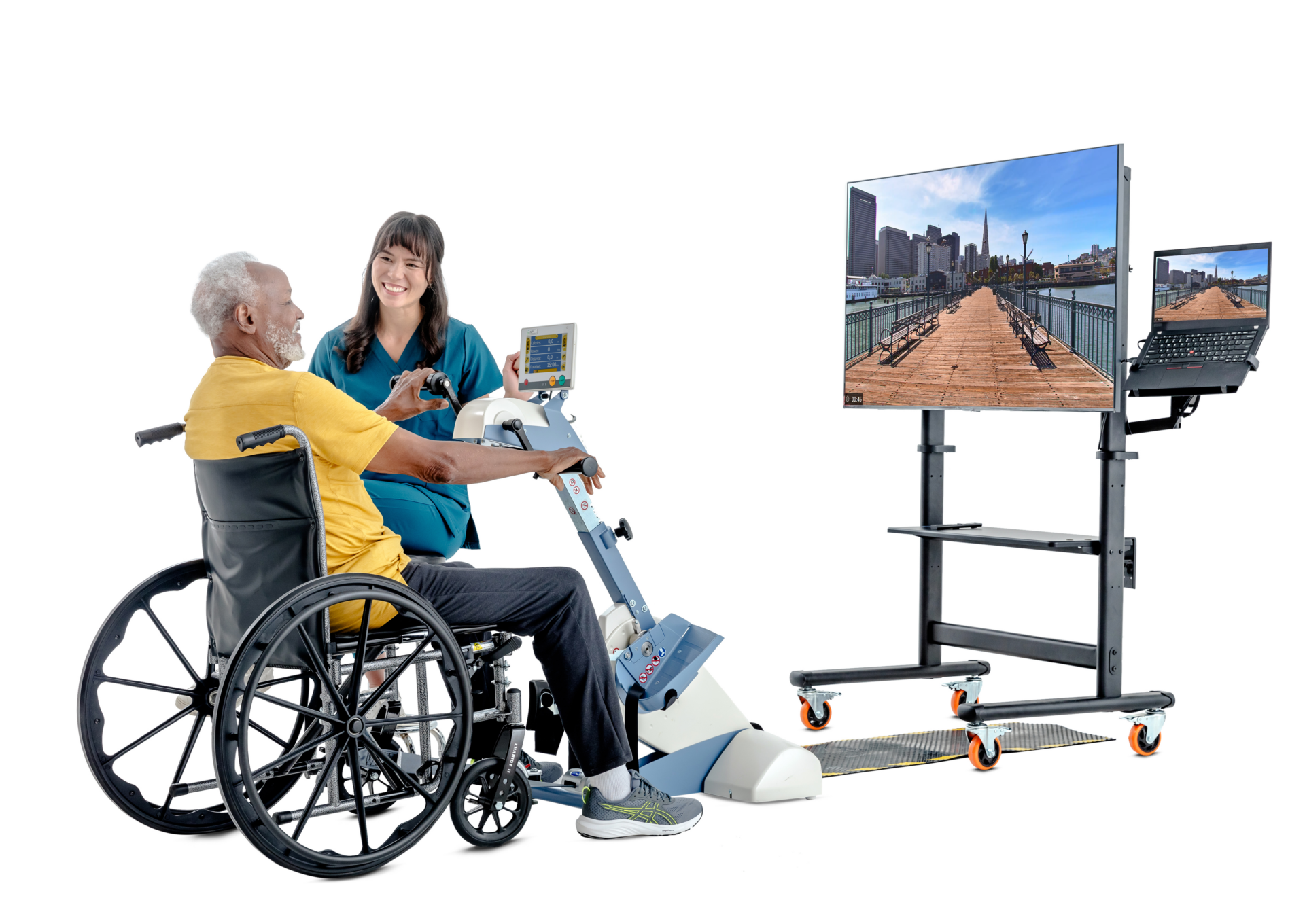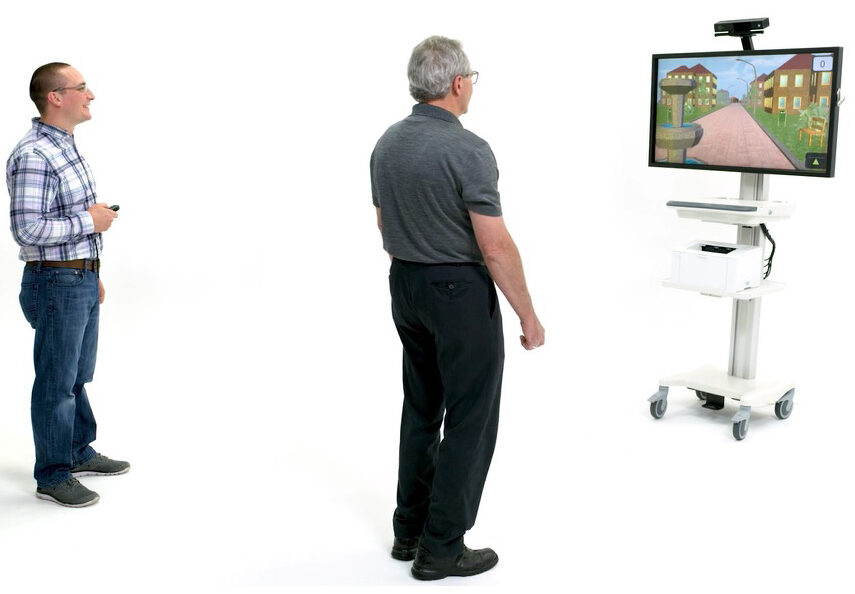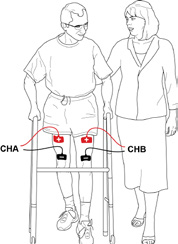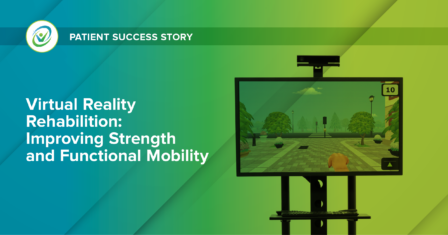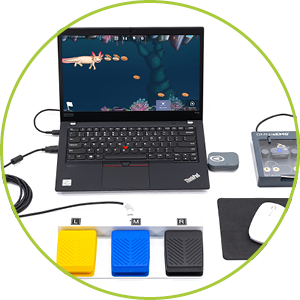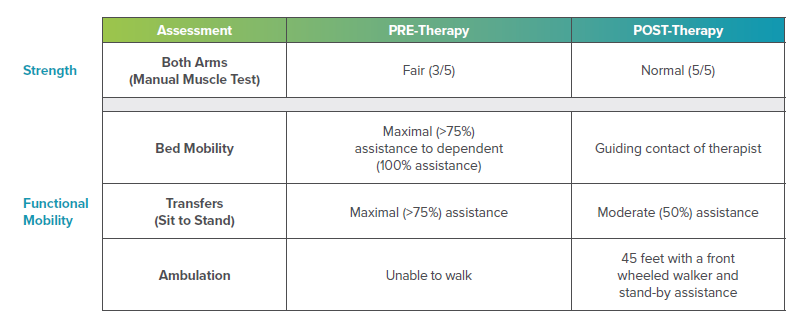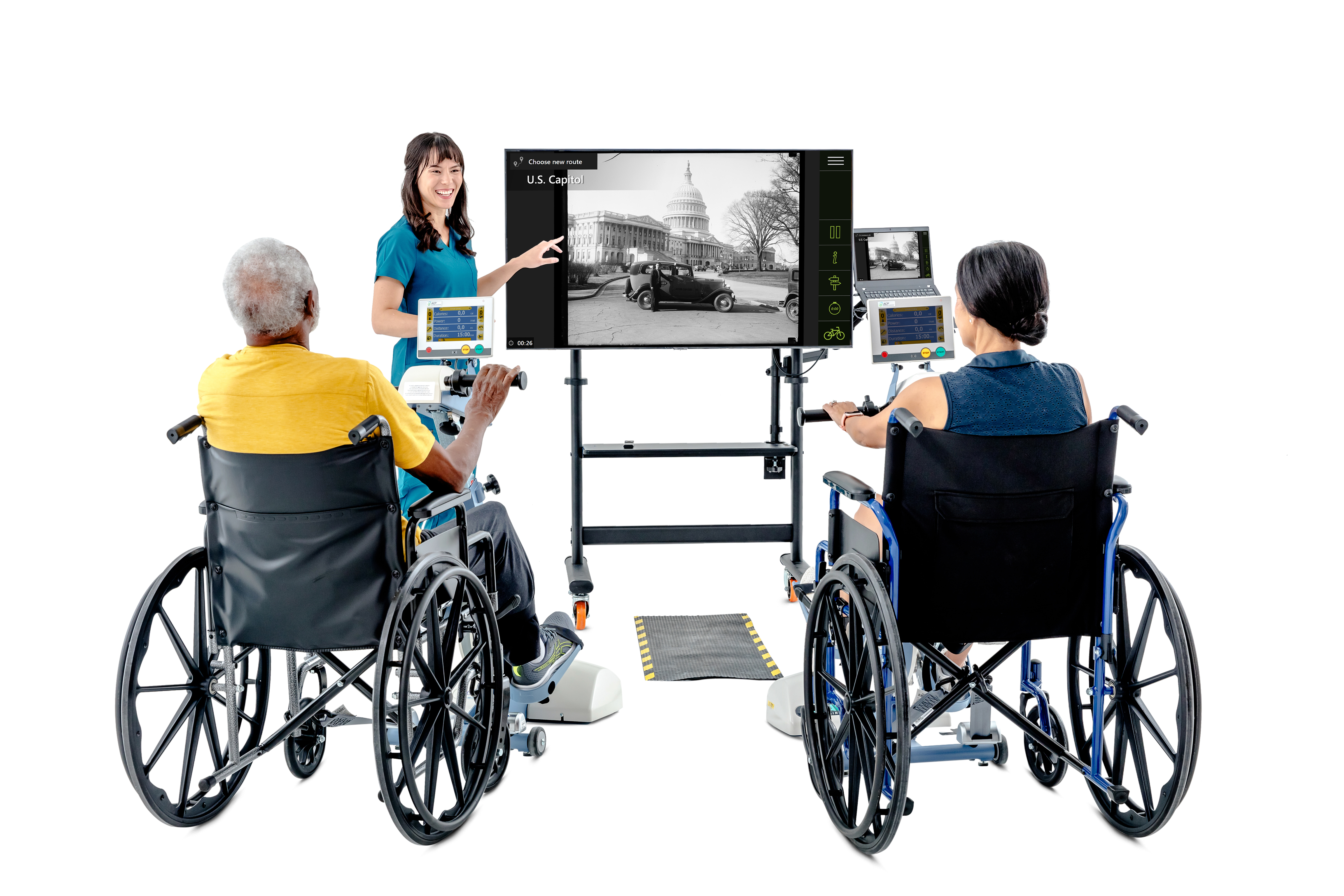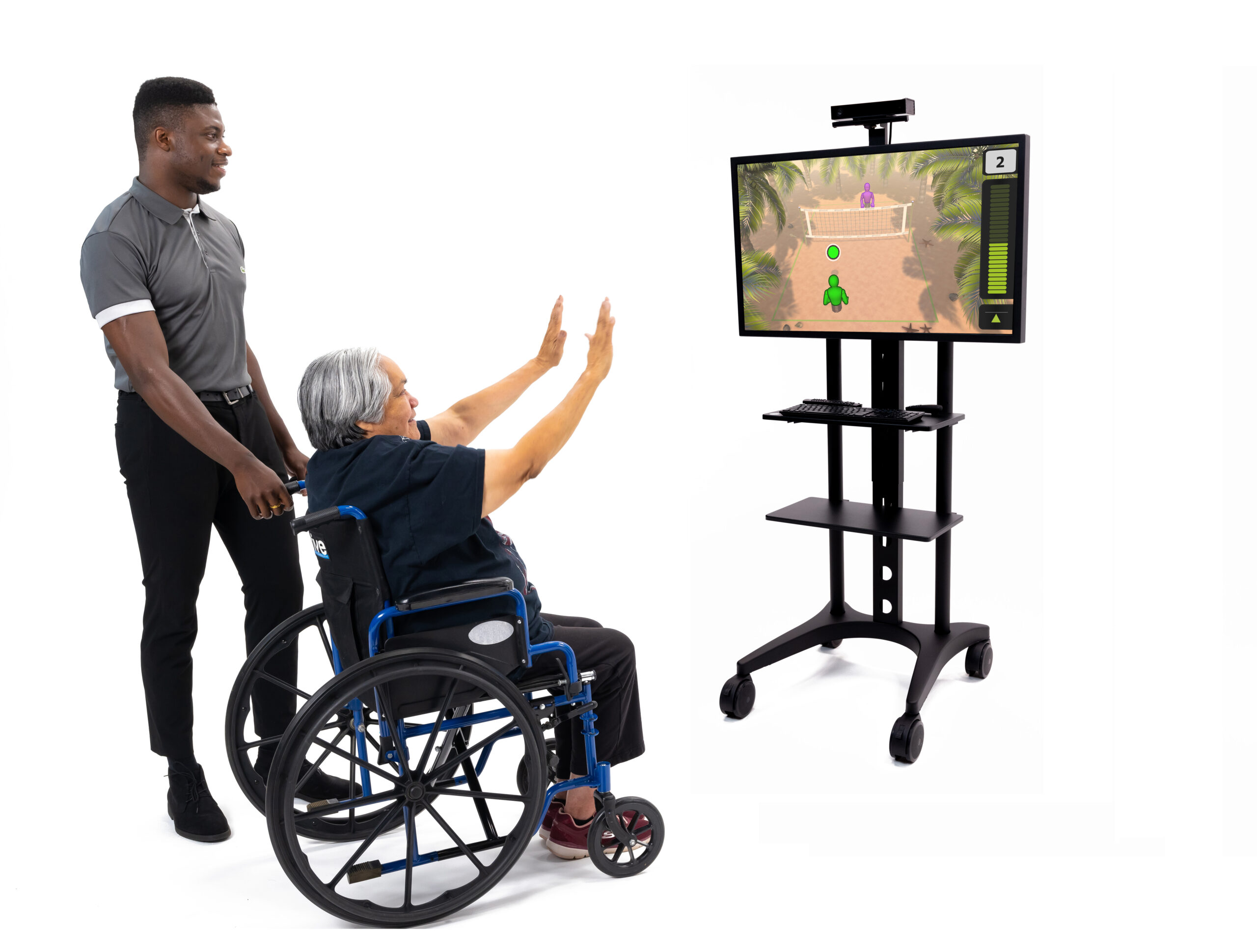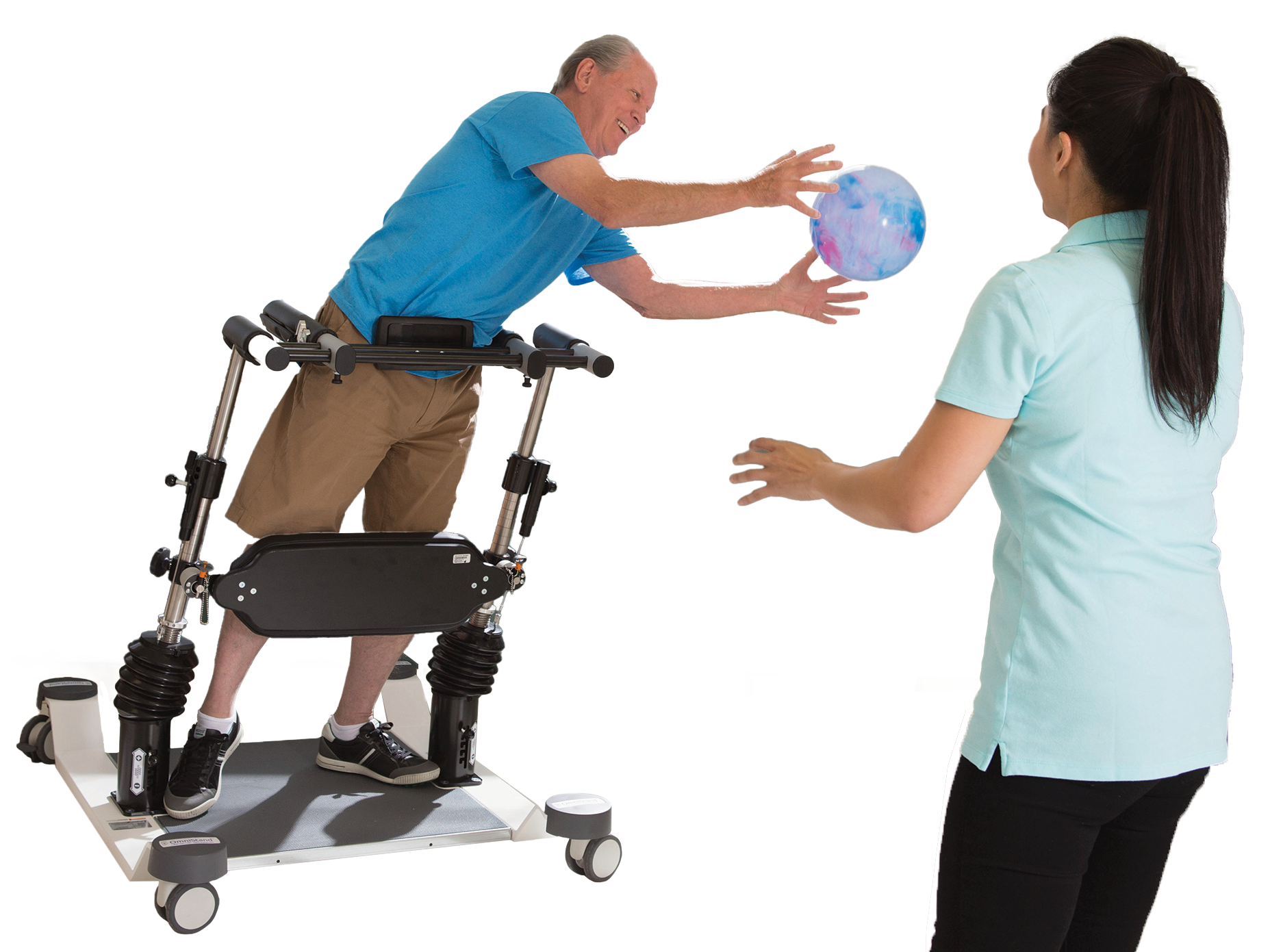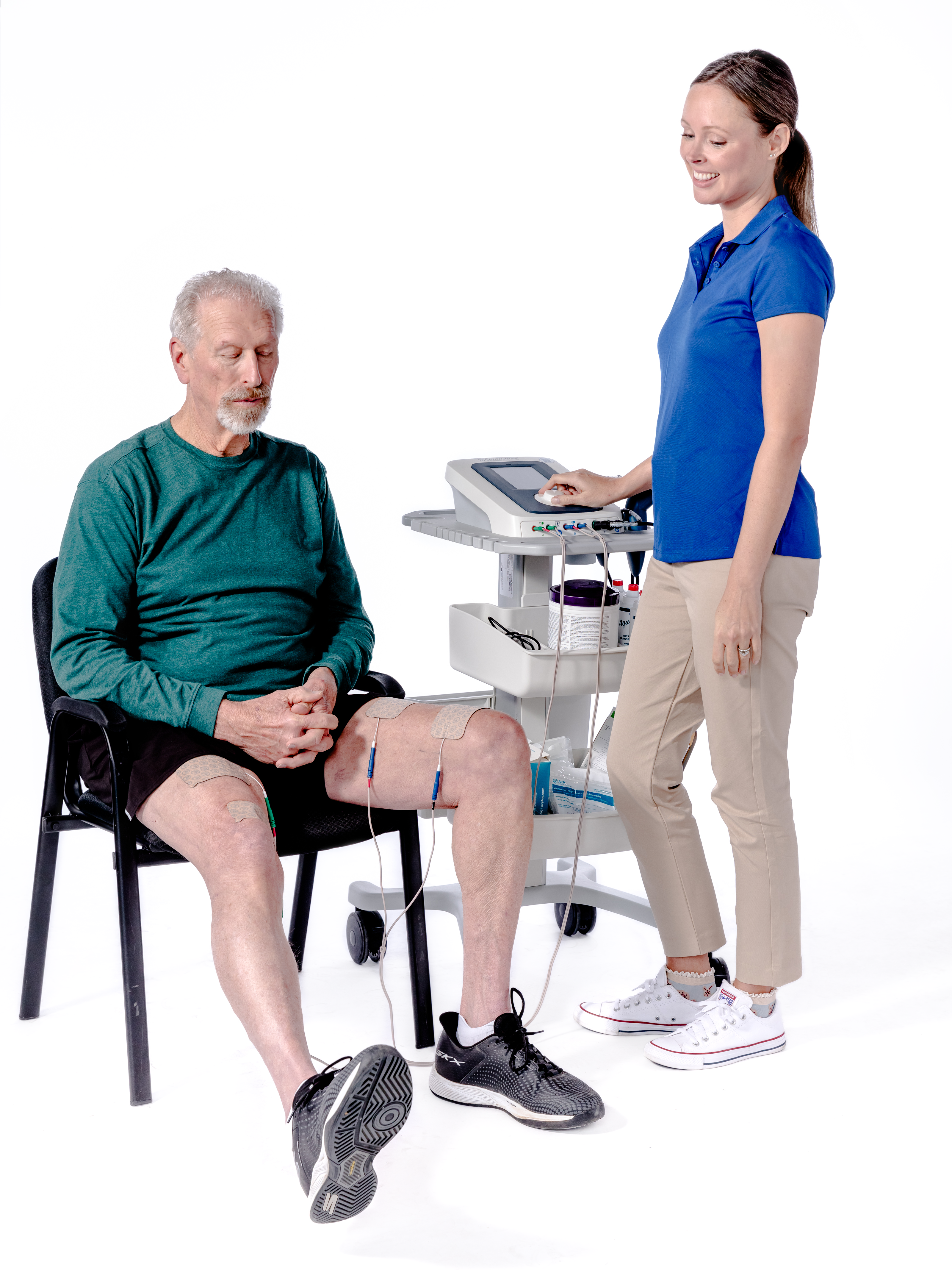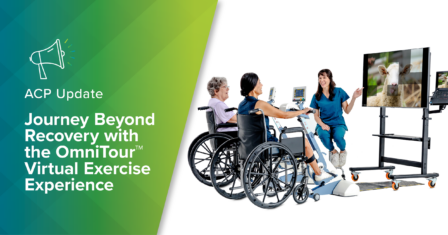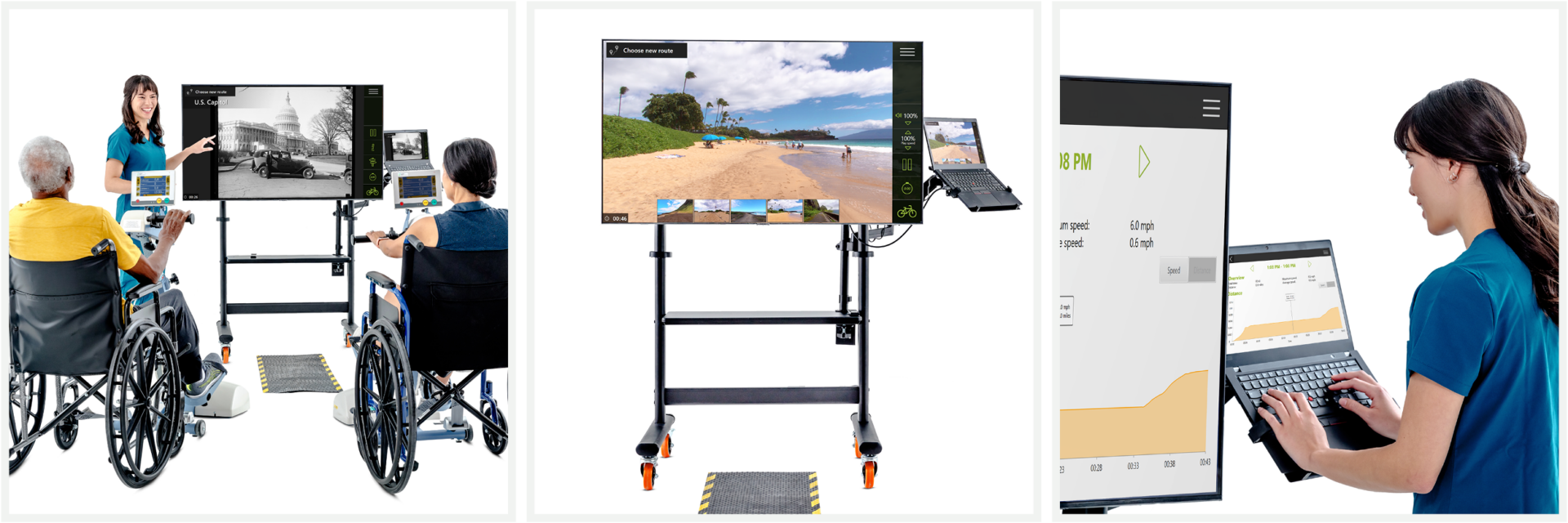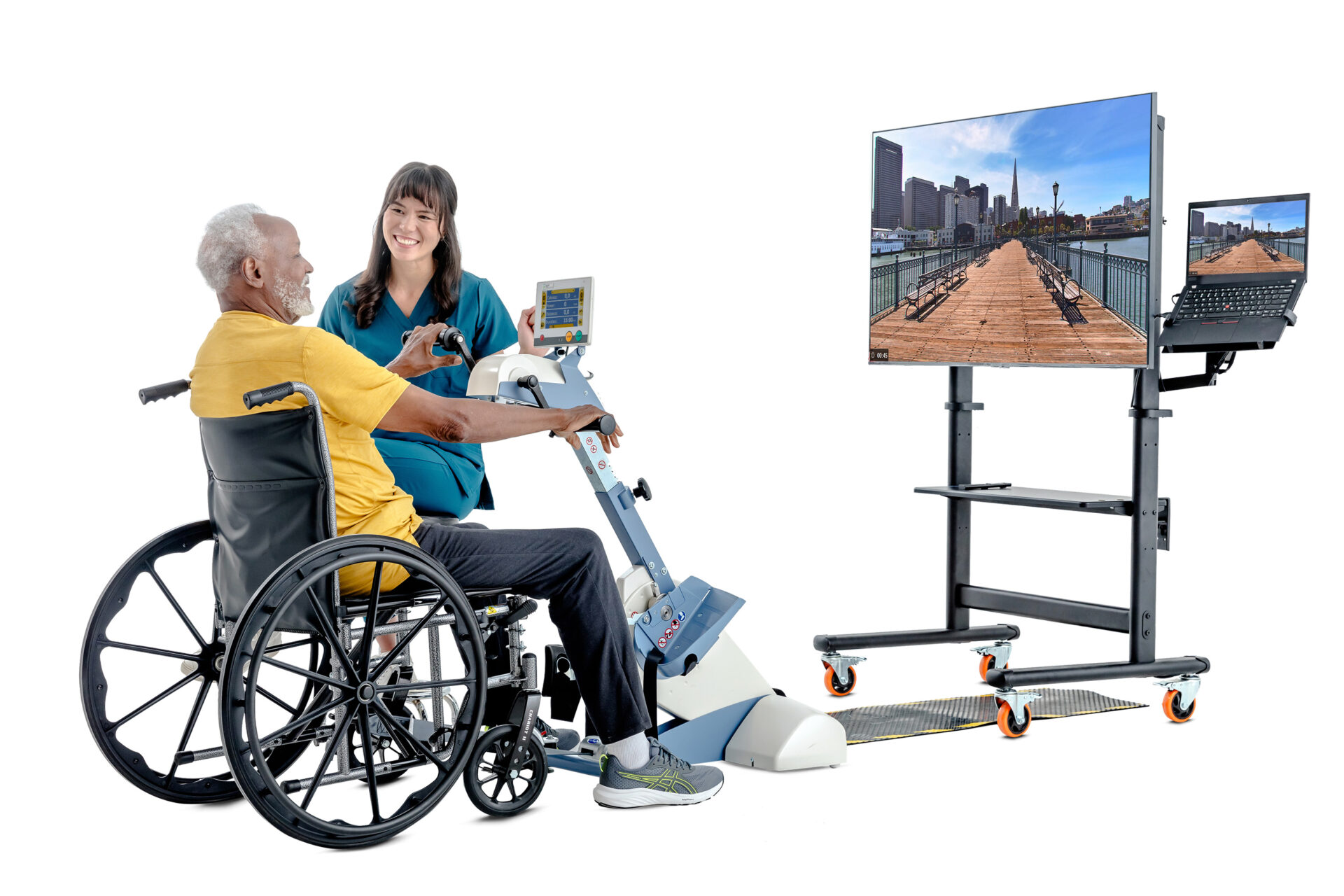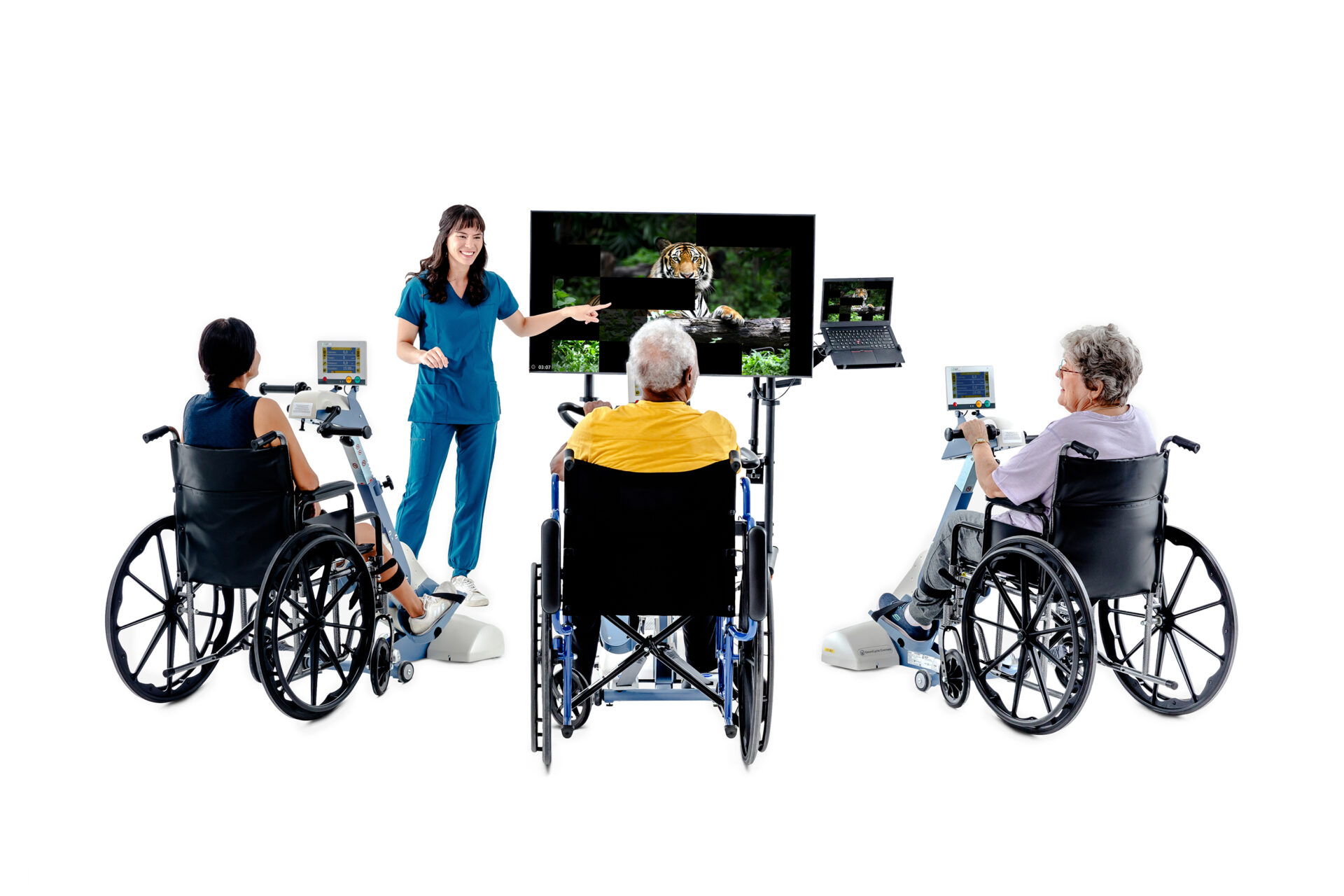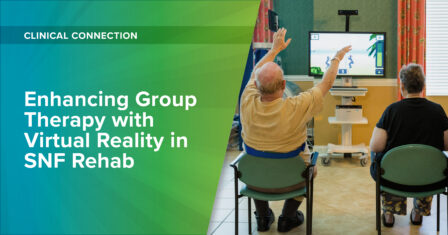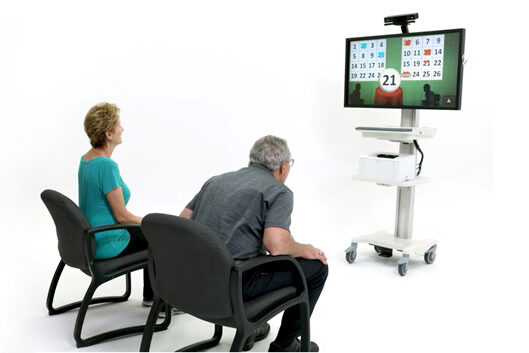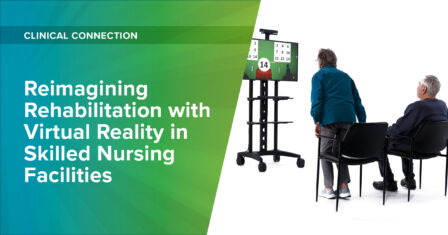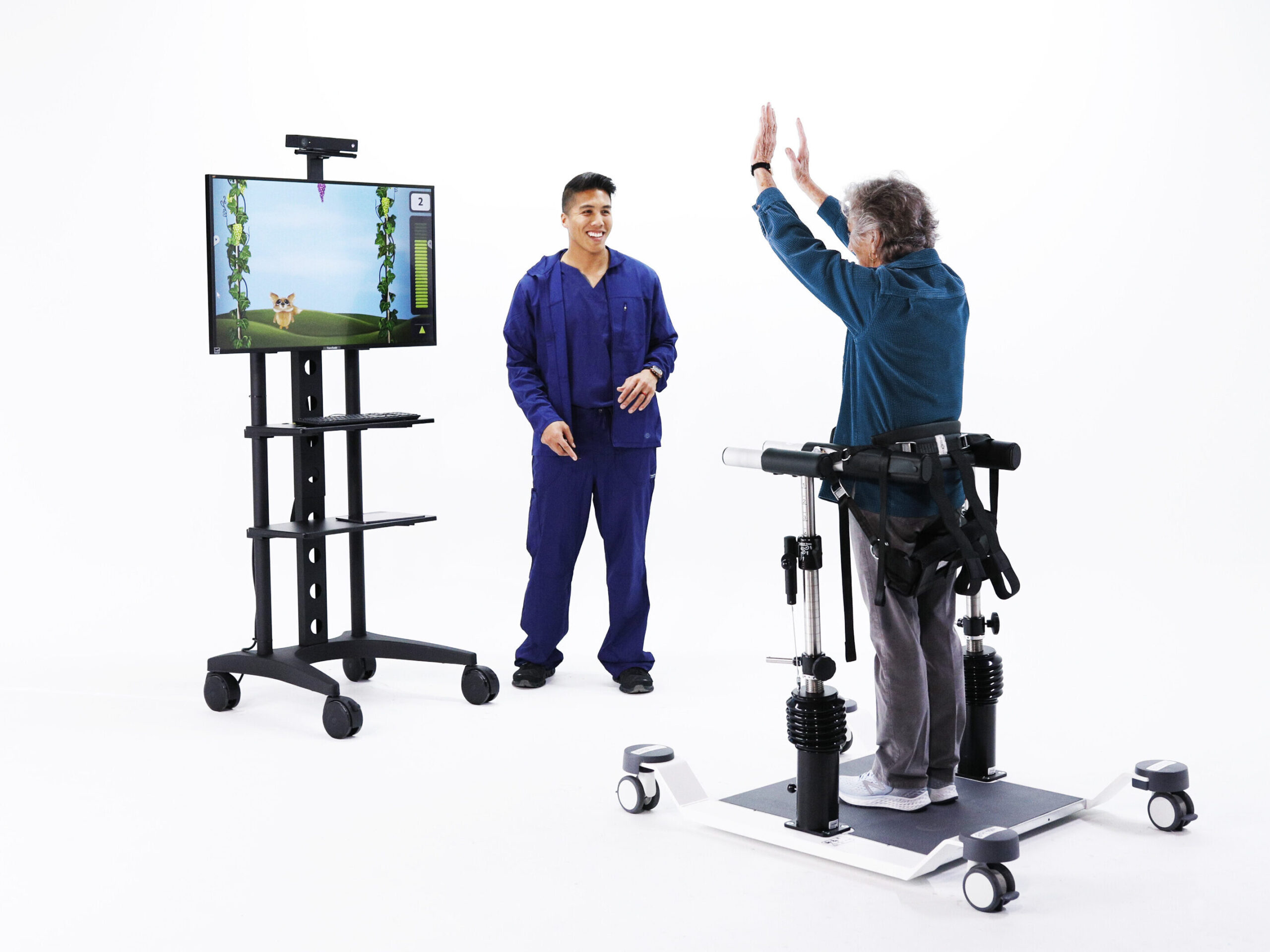This 66-year-old patient was referred to a skilled nursing facility for stroke rehabilitation. While hospitalized, he required a thrombectomy (procedure to remove blood clot), and he experienced right-sided weakness and general debility after being discharged. Before his stroke, he lived at home with his spouse, was independent with all functional mobility, and walked with a rolling walker.
Therapy Protocol
Physical & Occupational Therapy
- 4-5x/week x 4 weeks
OmniVersa® Electrotherapy & Ultrasound System
- Patterned Electrical Neuromuscular Stimulation (PENS) to the right arm and leg to decrease shoulder pain and for neuromuscular re-education and strengthening of the arm and leg
OmniVR® Virtual Rehabilitation System
- Virtual reality exercise (bingo and flower garden) to improve transfers, balance, and gait
OmniCycle® Connect Advanced Active-Assist Cycle
- Upper and lower extremity cycling neuro mode to promote improved endurance, strength, and reciprocal motor activity
Additional Interventions
- Gait training, transfer training, balance re-education, therapeutic exercise, self-care retraining, and therapeutic activities
Following the 4-week stroke rehabilitation program the patient made significant strides:
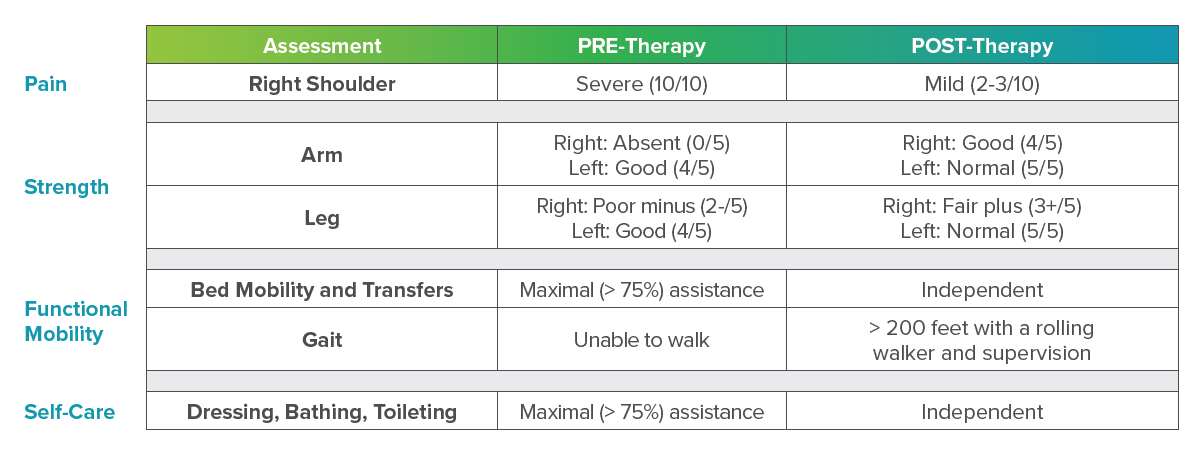
This patient is thrilled with the care he received and is so happy to be able to return home. He feels his therapy team really used all their tools to get him better as quickly as possible.
PENS really helped to improve his pain so he could participate in therapy with greater intensity, and it was also a big contributor to improving his strength on the affected side.
Therapist
Maximize Outcomes After Stroke
Incorporating innovative technologies, ACP’s evidence-based Neuro Rehab program is designed to help patients rebuild their strength and coordination post-stroke.
MRK-BLOG-024
This 66-year-old patient was referred to a skilled nursing facility for stroke rehabilitation after experiencing weakness on his right side and general debility. Before his stroke, he lived at home with his spouse, was independent with all functional mobility, and walked with a rolling walker. Keep reading to learn more about the innovative tools and strategies his care team used to maximize his outcomes and help him return home.

